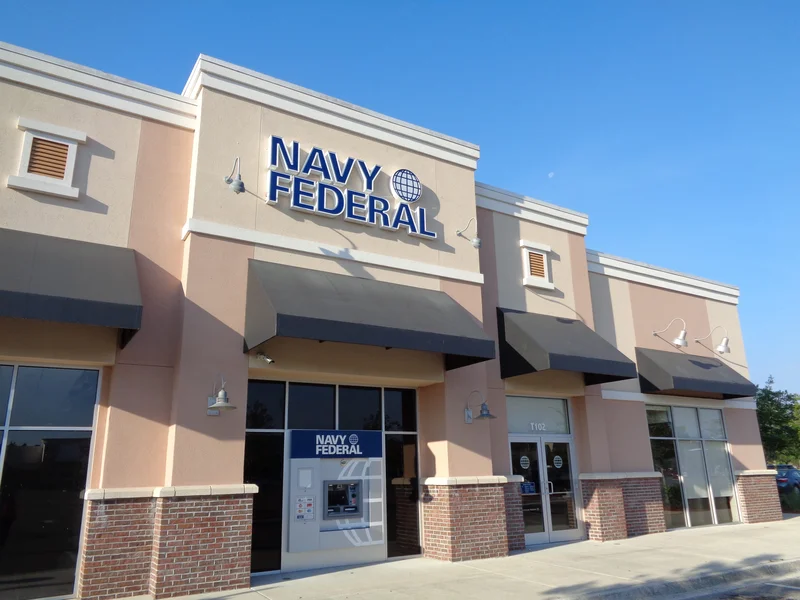I’ve spent my career chasing breakthroughs—the moments when a new technology fundamentally rewrites what’s possible for humanity. We talk about AI, quantum computing, and the fusion reactors that will one day power our cities. But sometimes, the most profound breakthroughs aren’t about inventing something new, but about fixing something old that’s catastrophically broken. And right now, we’re staring at one of the most important, and heartbreaking, system failures I’ve seen in a long time.
It’s not a software bug or a hardware flaw. It’s a breakdown in a promise.
Navy Federal Study: VA Loans Widely Known But Poorly Understood Among Military Community just landed, and it details a paradox so staggering it should be a national headline. It’s about the VA home loan, a benefit earned through service and sacrifice. You’d think a tool this powerful would be celebrated, understood, and used to its absolute fullest potential by our veterans and active-duty service members. But the data shows the opposite. While an incredible 92% of the military community knows the VA loan exists, the system designed to deliver this promise is failing them. It’s a ghost in the machine, a signal lost in the noise, and it’s preventing the very people who earned it from building a stable future.
A Promise Lost in Translation
Let’s get into the weeds for a second, because the numbers here tell a story of profound disconnect. The Navy Federal study, which surveyed over 1,000 members of the military community, found that a jaw-dropping 55% of them believe you need a down payment for a VA loan.
Let me be crystal clear: you don’t. The zero-down-payment feature is the program’s superpower. It’s the core design element meant to give military families a foothold in a housing market that feels impossible for so many. This isn't just a minor misunderstanding; it’s like thinking a smartphone can’t connect to the internet. It’s a fundamental misreading of the tool’s primary function. When I first read that statistic, I honestly just sat back in my chair, speechless. More than half of the intended users don't understand the single most revolutionary feature of the product. How is that even possible?
This is a classic information design failure. The VA loan program is essentially a piece of social technology, engineered to produce a specific outcome: homeownership for those who served. But the user manual is getting lost, or worse, rewritten with myths and bad data. Nearly half of the respondents didn’t even know that VA loans typically offer lower interest rates. This is the kind of breakthrough that reminds me why I got into this field in the first place—because elegant systems can change lives, and broken ones can cause immeasurable harm.

What we have here is a signal integrity problem of epic proportions. The VA and other official institutions are broadcasting a clear, powerful benefit, but the message is being garbled before it reaches the end user. Where’s the static coming from? The study gives us a clue: only 39% of service members turn to official VA or military resources. The rest are piecing it together from Google searches (20%) or family advice (9%). It’s the equivalent of learning to fly a plane by watching YouTube tutorials instead of talking to the engineers who built it. Can you imagine the consequences?
This Isn't a Glitch; It's a Design Flaw
This isn’t about blaming veterans for not doing their homework. When users overwhelmingly fail to understand your system, it’s not the user’s fault—it’s the system’s. The fact that the official channels are the least used sources is a damning indictment of their user experience. It means they are too complex, too slow, too bureaucratic, or simply too disconnected from the way modern people consume information.
And here’s the most incredible part: for the few who manage to navigate this maze of misinformation and actually use a VA loan, the experience is overwhelmingly positive. A full 92% of users reported satisfaction, and 91% would recommend it. The technology itself is brilliant. It works. It delivers on its promise. But the onboarding process is a disaster. It’s like we’ve built a gleaming superhighway but closed all the on-ramps and left people to wander through back alleys and dirt roads, hoping they stumble upon it by accident.
This reminds me of the early days of the internet—a tool of immense power that was initially accessible only to academics and specialists who could navigate its arcane protocols. It took the invention of the web browser, a user-friendly interface, to unlock its potential for the rest of the world. What is the modern-day equivalent for the VA loan? Is it an AI-powered advisor that can walk a service member through the process 24/7? Is it a radically simplified mobile app that debunks myths in real-time? Why aren't we applying the same design thinking we use for consumer apps to the systems that serve our nation's heroes?
The speed at which we can deploy new communication tools is just staggering—it means the gap between a broken system and a fixed one can be closed faster than we can even comprehend if we just decide to act. We have an ethical responsibility here. We can’t just build the tools; we have to ensure they are accessible, understandable, and that they actually reach the people they were built for.
It’s Time for a System-Wide Upgrade
This Navy Federal report shouldn't be seen as a story of failure. I see it as a diagnostic report for a system that is long overdue for an upgrade. The problem has been identified, the user pain points are glaringly obvious, and the core product is proven to be excellent. This is a solvable problem. It’s a design challenge. It’s a call to action for every fintech innovator, UX designer, and communications expert to step up and ask: how can we build a better bridge? How do we deliver this promise with the clarity and dignity it deserves? The answer won’t be found in a new government pamphlet. It will be found in applying the same relentless, user-centric innovation that defines the tech world to a system that matters more than most. Our veterans earned this benefit; the least we can do is make sure they can actually use it.



